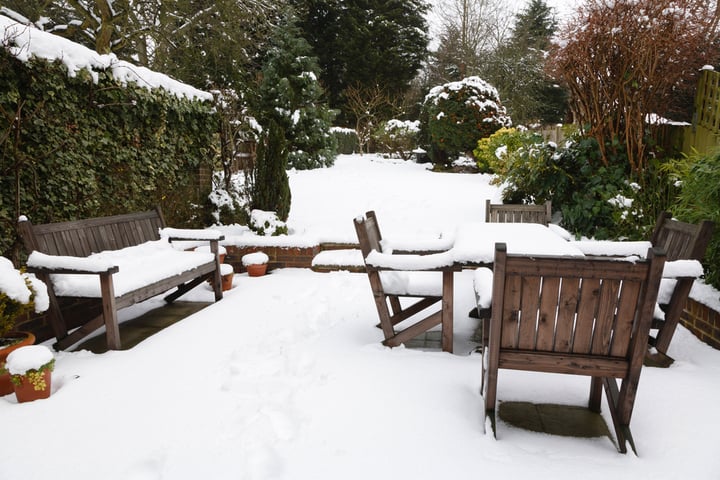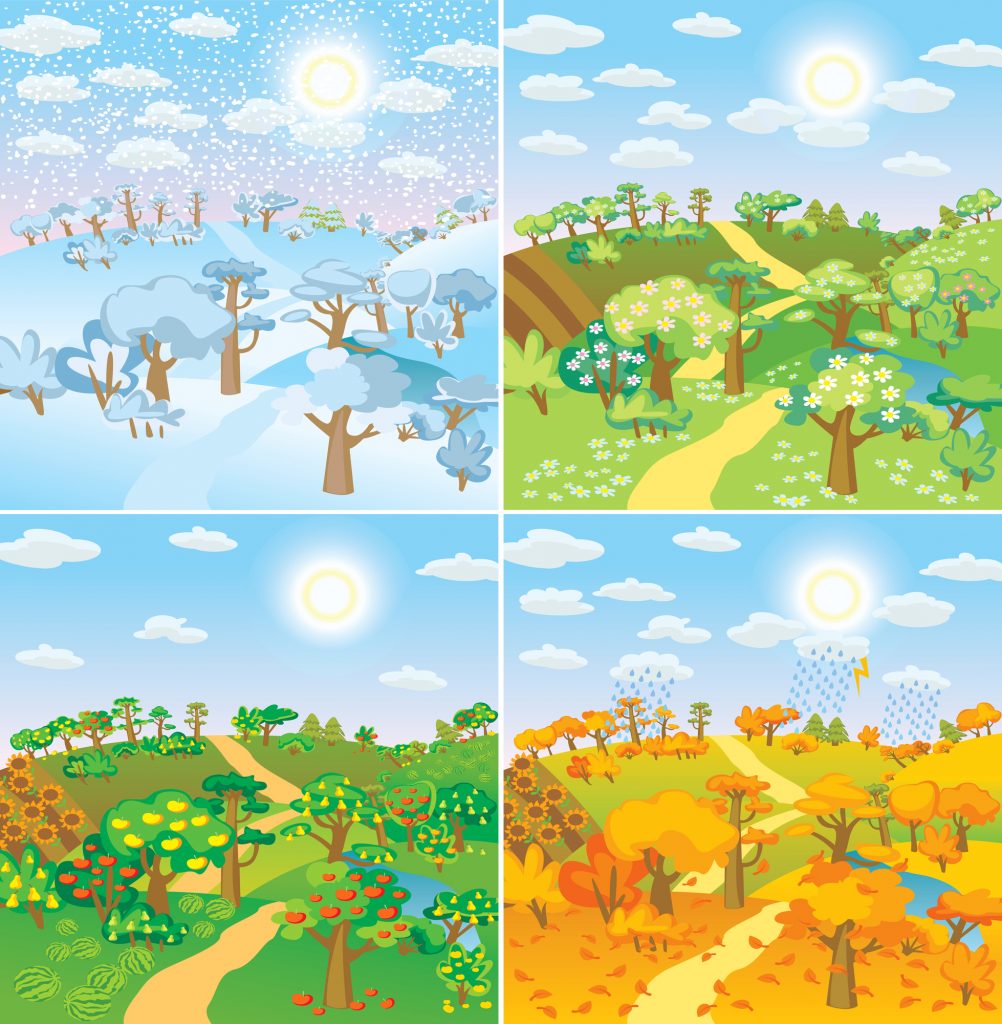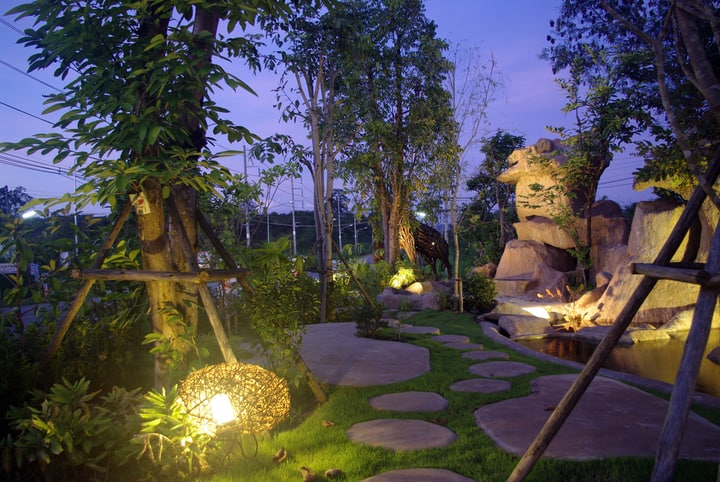Picture the scene: it’s a warm summer evening, and you’re sitting in your garden relaxing.
Everything is nice and peaceful, but you’re looking around and realizing that with a few extra garden lights, you could really improve your outdoor space.
Should you get started right away?
Is summer the best time of the year to get those lights installed, or is it a project that’s best left for another time of the year?
Maybe you want your landscape lighting to be more of a security feature, and you’re considering fall or autumn as your season of choice.
It’s best to install landscape lighting when the weather is drier. However, bear in mind where you live and if higher temperatures make labor more difficult. You need the soil to be easy to disturb, without being completely soaked.
Let’s delve a little deeper as we look at:
- Whether it’s possible to install landscape lighting in winter
- The most important weather considerations
- Which season is the best for your project
Can I Install Landscape Lighting In Winter?

The first point that I need to make here is that ‘winter’ means very different things depending on where you live.
In Orlando, Florida, winter means average temperatures between 50 and 70 degrees Fahrenheit (10 and 21 degrees Celsium), with rainfall averaging between 2.4 and 2.6 inches.
Meanwhile, in Washington State, that average winter temperature is much lower, between 23 and 36 degrees Fahrenheit (-5 to 2 Celsium), with between 6 and 6.5 inches of precipitation.
I won’t say rainfall because, at those temperatures, it’s more likely to be snow or hail.
And that are just two extreme US examples, but it shows you that ‘winter’ is interpreted differently.
But for a more simple answer, let’s explore whether you can install landscape lighting when there’s a lot of rain and snow and the temperatures are low.
In theory, yes, you can, but it will depend on the ground and how wet it is. Also, do you really want to?
Let’s start with moisture. You will be working with waterproof cables, but you need to connect them to your lights and power source.
Doing that when it’s wet means being extra careful not to touch wires with any moisture on your hands or let them touch a damp surface.
Because a waterproof wire won’t just stop any moisture getting in, but if you accidentally get it wet when connecting it, it’ll stop the water escaping too.
Most landscape lighting circuits will also involve burying the cable.
Otherwise, you’re left with a setup that doesn’t look appealing and acts as a hazard, either for tripping or exposure to more of the elements and local wildlife.
Trying to install your lighting when the ground is frozen is, therefore, a no-go.
Without proper mechanical digging tools, you’re not going to get a consistent trench dug without extreme amounts of effort.
At the same time, completely sodden soil isn’t much better.
Yes you’ll be able to dig it up, but working with wet mud and trying to lay cables neatly is going to be extremely messy, and much more difficult.
Related: How To Set Landscape Lighting Timer?
Main Weather Watchouts

The most important thing to look out for with the weather is rainfall. You don’t need conditions to be completely dry, but you can’t work effectively if the ground is soaked through.
Soil can stay soaked for a few days after a period of heavy rain, so even if the last couple of days has seemed quite dry, don’t assume you’re ready to start work.
Dig a small area, and if the ground isn’t holding together or you spot any patches of water, wait a bit longer.
If you live somewhere where it rains a lot, consider part-digging the trench you’ll need.
You can do it in stages, and if you get a day of sun, the more exposed soil will be dried out faster, so you can get to work quicker.
Of course, if it rains, then you’ll need to keep waiting.
At the other extreme, you shouldn’t work when the weather is too hot, for two reasons. First, if the ground is extremely dry, it’ll be harder to dig up.
But also, from a position of sensibility, digging a trench for cable takes time.
Doing that under a hot sun means you need to be extremely careful of exhaustion and skin damage from the sun.
Take proper precautions, wear sunscreen and get help if you can see so that you aren’t doing all the work alone.
And while these last points are common sense, it’s worth saying that you should avoid trying to undertake any outdoor project when there is ice on the ground.
Also, try to do it when you’ve got enough hours of daylight to make it worth doing and when there’s no fog.
Not just because it’s miserable weather to work in, but to make sure you’re always prioritising safety.
Related: How To Find Buried Landscape Lighting Wire?
Which Season Is The Best For Installing Landscape Lighting

There is no easy answer for the best season for installing your landscape lighting since the climate varies so much depending on where you live.
Instead of giving a definitive answer like “spring,” you need to look at the weather for your local area and find the season that best suits you.
Optimal conditions are:
- When the ground has some moisture, but is not completely soaked
- Long daylight hours to give you more time to work
- A comfortable temperature to work in
Remember that outdoor lighting is something to be enjoyed year-round.
Don’t rush it to prepare for summer if you don’t have safe conditions to work in.
Installing landscape lights in the fall means you’ll have a safer outdoor space for the winter since everywhere will be illuminated better.
Also, if you’re digging up your garden to install your wires, you might want to avoid spring if you have plants and flower beds that you want to cause minimal disturbance.
This is when they will do most of their growing – it might be better to wait until the fall when they are dormant.
Also read: Do Outdoor Lights Require GFCI?
Final Words
There’s just no simple answer for the best season to install lighting because the world is entirely different.
You know where you live best, so think about your typical drier and wetter seasons, and plan your work around that.
While it might seem like a good idea to get your garden ready for the summer, only do that if you know, you’ll have the conditions to complete the work without causing problems for the rest of your garden.

